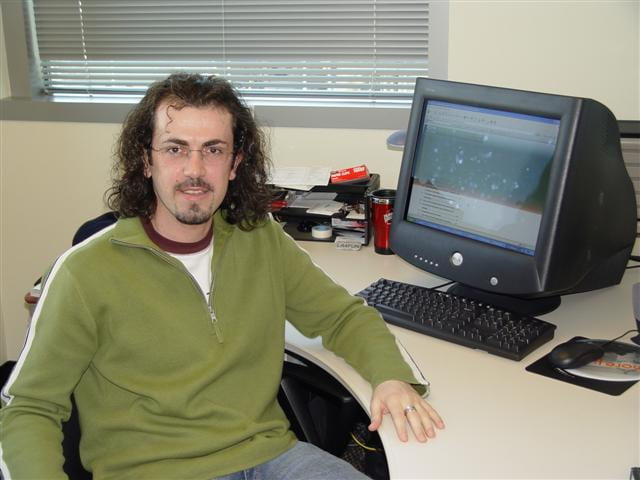
Originally from Bafra Turkey, Hamza received the B.Sc. degree from Middle East Technical University in 2000. He received the M.Sc. degree from the University of Southern California in 2002. While at USC, Hamza worked as a student fellow at the Biophotonics Research Laboratory at Cedars-Sinai Medical Center. He is currently pursuing the Ph.D. degree in Electrical and Computer Engineering at Georgia Tech and is a member of both the Institute of Electrical and Electronics Engineers (IEEE) and the Optical Society of America (OSA).
Hamza joined the the Nano and Ultrafast Photonics Laboratory in 2002, and his research has focused on the design of photonic-crystal sensors for security, industrial, and biomedical applications. Other applications include gas-activated terahertz devices. In particular, he is exploring implementations in the terahertz region of the electromagnetic spectrum, which has been underexploited due to the lack hitherto of convenient terahertz sources, detectors, and active and passive elements. Moreover, many small as well as large molecules possess distinctive spectroscopic fingerprints in the spectral range from several hundred gigahertz to ten terahertz. It is also important to note that because the wavelength at 1 THz is ~0.3 mm, device fabrication is facilitated, and implementation geometries that involve the realtime flow of analyte-bearing liquids or gasses may be enabled.
One of the attractive features of terahertz photonic-crystal sensors is that they can be integrated monolithically with microfluidics. Possible applications include the incorporation of the envisaged terahertz photonic-crystal sensors within gas-liquid-phase industrial processes enabling nonintrusive realtime monitoring of the presence of selected analytes. For similar reasons, these sensors may be of interest for environmental and security monitoring. The application of these devices for lab-on-a-chip applications is also of great interest, since chip fabrication is likely to be inexpensive, very small quantities of analyte are needed, many samples can be easily loaded simultaneously on the chip, and multiple use of the chip may be possible.
The work is based on electromagnetic simulations based on the finite-difference time-domain method (FDTD).These simulations include a spatially nonuniform medium with a frequency-dependent dielectric constant (i.e., the analyte). The simulations consider a narrow- or broad-band terahertz pulse incident on one end of the defect waveguide, and the transmitted field is monitored at the other end. By comparing the spectra of the transmitted field with or without the presence of the analyte in the defect-waveguide air holes, one determines whether analyte is present.
Research Interests
- Photonic crystal based bio-sensors
- Microwave and terahertz frequency photonic bandgap devices
- Finite-Difference Time-Domain (FDTD) theory and applications
- Design of nanoplasmonic devices and novel plasmon waveguide geometries
Distinctions
- Cedars-Sinai Student Fellow (2001-2002)
Page Last Updated: 8 August 2005

